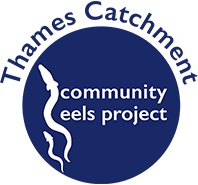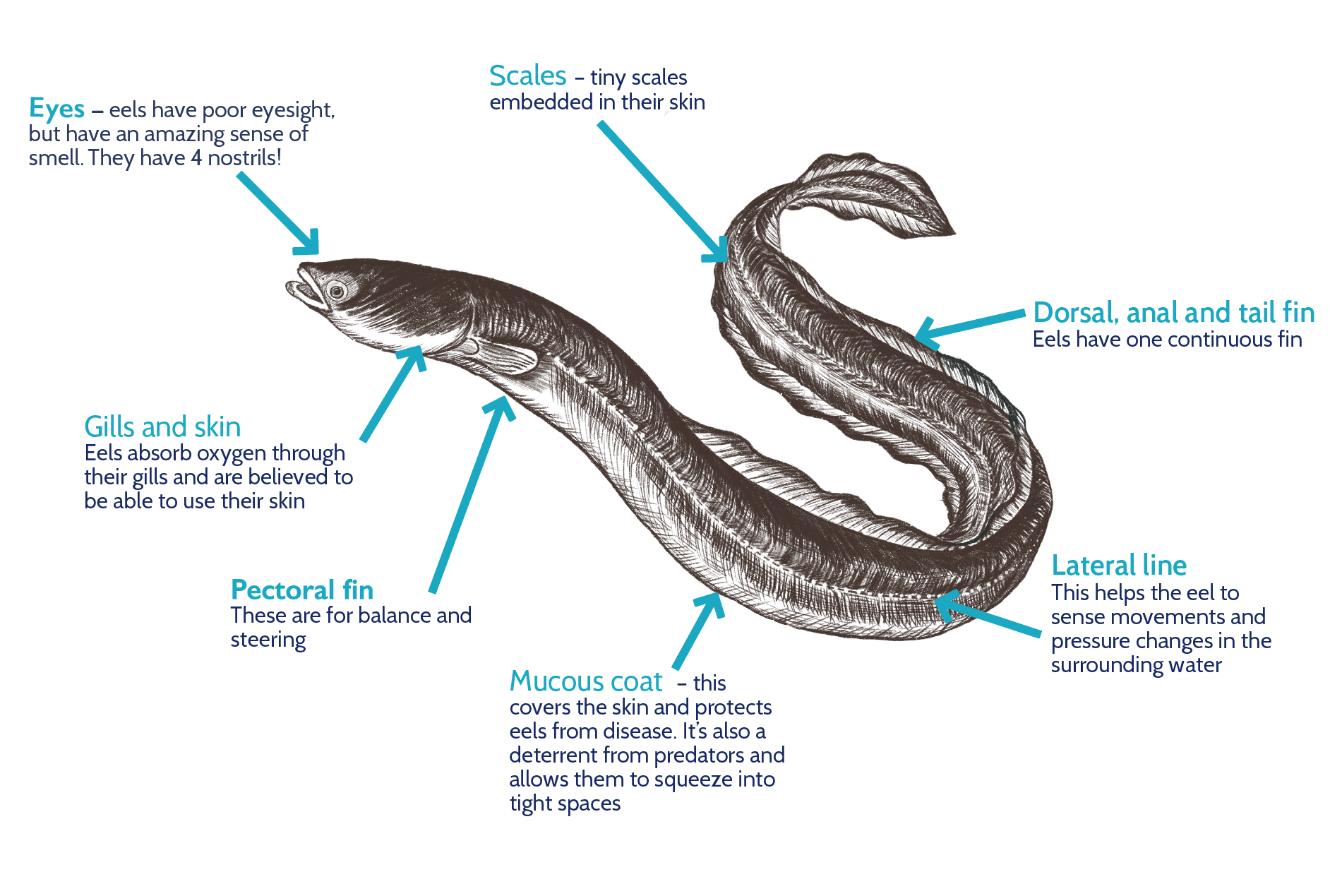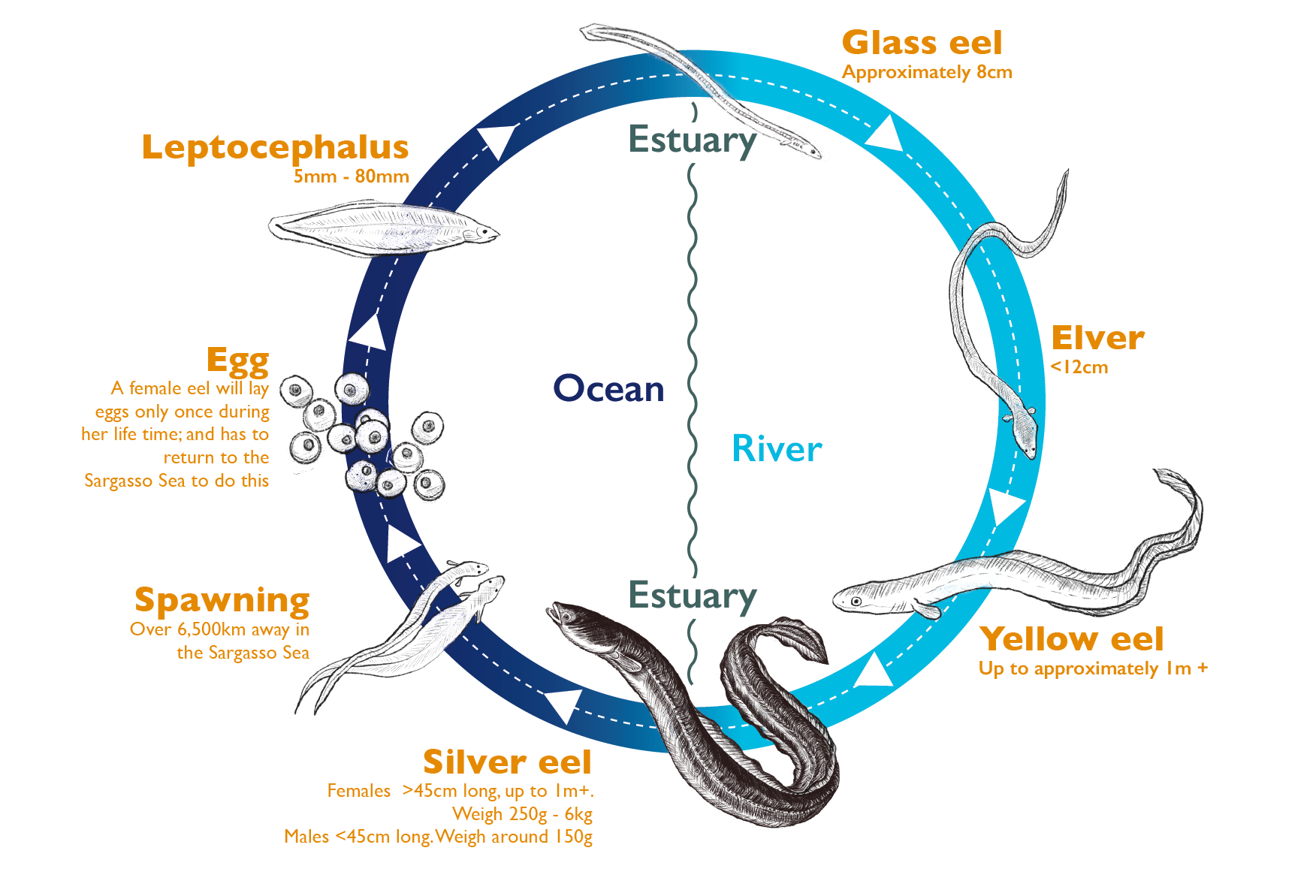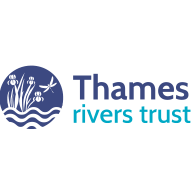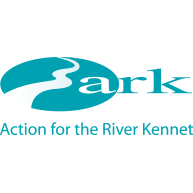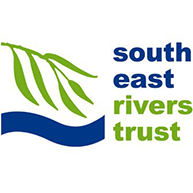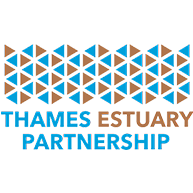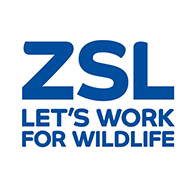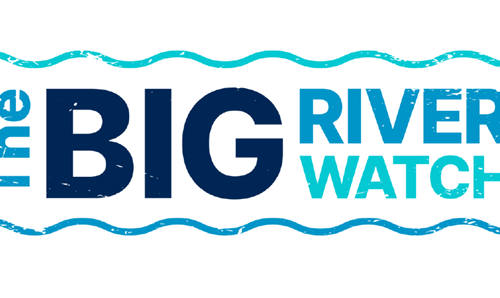The European eel (anguilla anguilla) is one of around 800 species of eel in the world and is facing a number of issues. Its population has rapidly decreased and it is currently classified as Critically Endangered in the IUCN red list of threatened species.
The European eel may have a snake-like appearance, but is in fact a fish. All European eels hatch from tiny spherical eggs in the Sargasso Sea, in the western Atlantic Ocean and embark on a migration that will take between 1 and 2 years. The tiny eggs float on the sea currents and hatch into larvae, called leptocephali which are are about 5mm long. The leptocephali float on currents towards Europe, on a journey that is over 6,500km.
By the time the leptocephali reach the continental shelf of Europe they will have grown into a glass eel and it is at this stage of the life cycle that they enter the Thames Estuary.
As they move up the Thames, they develop into elvers. The elvers need to spread out within the river system and swim up tributaries to find suitable habitats and food to enable them to grow.
Once in the river system the elvers develop into yellow eels which are immature adults.
The yellow eel life cycle stage lasts many years and is spent within our rivers in the Thames rivers basin, before the eel becomes a silver eel. The silver eel only becomes fully mature during its migration back to the Sargasso Sea. It is this journey that the eel must make to enable it to spawn and complete its life cycle once it reaches the Sargasso Sea.
Check out the key anatomical features of an eel, including its four nostrils! The eel anatomy and life cycle illustrations can be downloaded.
Fish Migration Road Map
Thames Estuary Partnership (TEP) is collaborating with us on the Thames Catchment Community Eels Project. The barrier data collected by trained volunteers will be incorporated into the Fish Migration Roadmap and into the Thames Basin Eel Management Plan (EMP) to aid the measures needed to improve the Thames River Basin for eels.
TEP are running workshops for our project partner Trusts to enable each catchment to have their own Roadmap, the map can be used to inform decisions for future eel projects and to engage communities and stakeholders.
Thames Catchment Community Eels Project completed in March 2022, for more information please contact us


